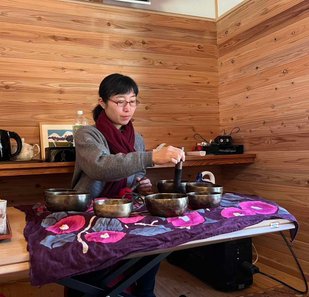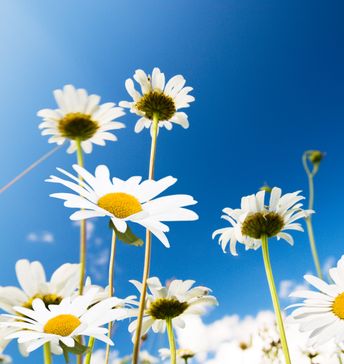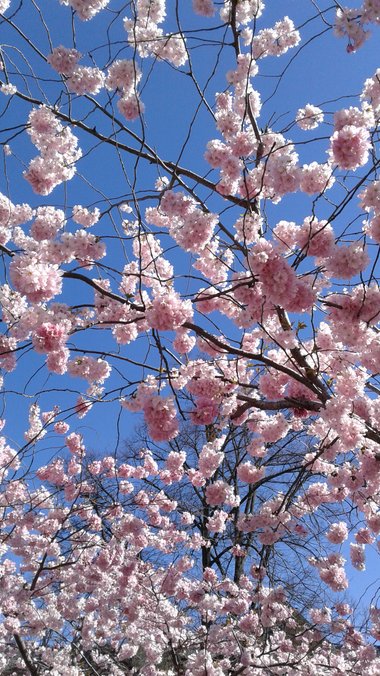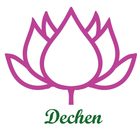Dechen
News: Group healing/meditation session with singing bowls every week! Read more from here.
Welcome to Dechen
Dechen means "great bliss"
in Tibetan language.
I help you so that you can feel "dechen" during the treatments,
and even in your daily life.
Healing
Be in balance
Body and mind are connected.
Let your body and mind be
in balance
through the Reiki- and singing bowl healing.
Singing bowl healing
A singing bowl is literally a “singing” metal bowl.
The sound and vibration from the metal bowls give us an indescribable relaxed and healed feeling.
The deep sound and small vibration merge into the body and help us to be harmonized in every corner of the body.
There have been a lot of researches and practices about physical and emotional effects of sound. This healing method has been used at medical sites in some places.
Find more information here:
History
The history of singing bowls is full of mystery.
As the bowls are called “Tibetan singing bowls”, they were/are apparently used in Tibet but it's not clear how they originally were produced or who used these bowls for healing.
It is said that the bowls existed already before Buddha's time, that is, more than 2500 years ago. But at Buddha's time bowls were mainly used by monks for begging or simply for eating rather than for healing.
As Buddhism spread to the countries around India, bowls were brought to Tibet, Korea and all the way to Japan. In Japan you can find the big size of the bowls at temples (called Keisu/Kinsu) or small size at family alters at home (called Orin). And they are used for rituals.
How have the bowls for begging changed to ritual implements and further to healing tools? It is said that only high Lamas in Buddhist temples in Tibet were allowed to use them for secret rituals and other monks knew nothing about the bowls. That's why not so many things are known. But, then again, we never know all the facts.
A lot of documents were lost during the Chinese invasion in the 1950's.
People who fled from Tibet at that time brought the bowls out of the country as their possession in hope of exchanging them for necessities in case they would have difficulty to make a living. That's how singing bowls spread in Western countries, too.
In Tibet they have an old shamanistic-animistic religion Bön which has existed far longer time than Buddhism. Over time Bön has been influenced by Buddhism but still remains as one religion in Tibet. According to Jansen* it's a “shamanic branch of Buddhism”.
On the other side of the Himalayan mountains, the bowls have also been used by shamans in Nepal. These activities by shamans at both sides of the mountains could be the origin of the singing bowls as a healing tool.
As mentioned, the history of singing bowls as a healing tool is not clear. There are not many people left who can tell the stories from before the 1950's in Tibet, either.
Material of singing bowls
They are made by metal. Generally one bowl is made from 5 to 12 different kinds of metal. In my bowls 7 kinds metals are used and each metal corresponds to a different planet:
- Gold – Sun
- Silver – Moon
- Mercury – Mercury
- Copper – Venus
- Iron - Mars
- Tin – Jupiter
- Lead - Saturn
The amount of mercury is little and it's used to eliminate impurities of the metals.
In addition, the bowls I use are so-called full moon bowls which are produced only on full moon nights. The craftsmen purify themselves and make rituals before they start working with these bowls. The bowls have power from the full moon.
Healing
Through the sound and vibration from the bowls, which are placed around you or on your body, your energy is harmonized. The sound from the bowls doesn't give one concrete note as C, D, E, etc but several overtones. Vibration radiated from the bowls go into your body and give a massage on a cellular level.
70 to 80% of the human body is water. As a stone in water makes rings of ripples, the vibration from the bowls affects the water inside of your body and spreads through the whole body. Also, the sound and vibration lead you to the state in which you are in deep meditation and where a theta wave occurs in the brain (slower than alfa wave which occurs in relaxed state).
You will feel totally relaxed both physically and mentally after the session.
There is also a spiritual aspect. It is said that bowls connect the receiver to the universe. According to a Tibetan buddhist monk, the sound is giving teaching of Buddha about broadness and emptiness.
How it feels depends on the receiver. In the same way as Reiki, the healing power works on the place where it's needed. The practitioner decides intuitively where to place the bowls or the strength and length of the sound by observing carefully changes of the sound and the receiver's state.
The receiver will be in a state between sleep and awake and it's not unusual that you will fall asleep. You might see some visions or have interesting dreams. It may make you laugh or cry. There are some cases where chronic joint pain is gone after one session.
The vibration inside of your body remains even after sessions. Sometimes you still feel it after many hours. Some experience “something has started“ in the body.
Reference
Jansen, Eva Rudy (2002). Singing bowls A practical Handbook of Instruction and Use. Dehli: New Age Books.
Shrestha, Suren (2009). How to heal with singing bowls: traditional Tibetan healing methods. Boulder: Sentient publications
Subedi, Salil(2016). Singing Bowl A Nepal instrument for Tuning the Mind Healing the Body, Kathmandu: The Himalayan Singing Bowl Centre
https://www.bodhisattva.com/tibetan-singing-bowl-history/
https://www.massagearoundtheworld.com/blog/origin-singing-bowl/
I learned singing bowl healing by Mr. Shree Krishna Shahi in Kathmandu, Nepal. We call him Shree-dai (brother Shree) with respect and affection. He grew up looking at his grandfather who was a shaman. He has been working for more than 30 years as a healer (though he is not happy to be called so), teacher and musician both in Nepal and other countries.
Reiki healing method
The Reiki healing method is hands-on healing with help from the energy of the universe.
The word Reiki consists of two parts: “rei” and “ki”
“Rei” means miraculous, mystic, sacred and
“Ki” is energy.
Miraculous energy, that is Reiki.
Reiki is an inexhaustible energy from the universe and it is everywhere. It is an essential energy for all beings.
You might have experienced that you feel better when walking in the forest. Or feel relaxed just by receiving warm sunlight on your body. This natural energy which leads us to be in a harmonized and relaxed state, is also a part of the energy of the universe.
We all have Reiki within our body as self-healing energy. When you have stomach ache, maybe you automatically put your hands on the stomach. When a child falls and gets hurt, you blow on the wound or stroke the child gently with your hands to make him/her feel better. In that way you are using your own healing energy to heal yourself and others.
Reiki healing helps to awake your own healing energy and puts your mind and body in harmony. Reiki energy works even for animals, plants and objects.
Reiki works for the best of each individual!
How does a session go?
It's hands-on healing, basically. The practitioner puts his/her hands on different parts of the receiver's body. We also use a hands-off method when, for example, scanning the body.
How the receiver feels is very different from person to person.
Some get warm and others cool, or sometimes you get a stinging sensation. It's not unusual that you feel a little dizzy after treatment depending on what your body needs. Your emotion can be stimulated as well. You might feel happy, sad, angry etc during the sessions.
But Reiki works for the best of each individual. Reiki energy heals the place which your body needs, whether physically or mentally.
In other words, we practitioners cannot control the energy.
For example, I cannot control how much energy I can send to you. Even if I wish to send more or less energy, I cannot adjust. Because Reiki energy from the universe knows how much the receiver needs. So what I, as a practitioner, do is to leave everything in Reiki's hands and send the energy as it is without mixing my own energy.
History of Reiki
Reiki is a healing system which was developed in 1922 by a Japanese man, Mr. Mikao Usui (1865 -1926).
The method of hands-on healing has existed for longer in other parts of the world such as Tibet. But it was Mr. Usui who established Reiki healing art as one system.
After having completed various studies such as history, medicine, religious studies, psychology and so on, both inside and outside of Japan, Mr. Usui went to Mt. Kurama in Kyoto to seek for Satori = enlightenment. While he was fasting and meditating on the mountain, he suddenly got inspired by Reiki on the 21st day and attained spiritual enlightenment. At the same time he received a healing ability.
With a wish to share this ability with as many people as possible, he founded “Usui Reiki Ryoho Gakkai” in 1922 in Tokyo.
Among the immediate students of Usui sensei was Mr. Chujiro Hayashi (1879-1940) who used to be a captain of the Imperial Navy. Mr. Hayashi opened his clinic “Hayashi Reiki Kenkyukai” in 1931 and continued the healing art and made an effort to spread the method.
Ms. Hawayo Takata (1900-1980) was one of the students of Hayashi sensei and became a Reiki shihan (teacher). She was second generation Japanese-American, born in Hawai. She encountered the Reiki healing art of Hayashi sensei when she visited Japan to treat her gallbladder disease. She recovered completely from the illness without having surgery. Ms. Takata learned Reiki by Hayashi sensei and after returning to Hawai, she opened her own clinic. Many shihans were born under her Reiki teachings and ever since Reiki has been widespread in the Western world.
In Japan, it was only in recent times that “Western style” Reiki returned and spread.
On the other hand, traditional Reiki has also been practiced and the “Usui Reiki Ryoho Gakkai” founded by Usui sensei is still active.
My teacher Mr. Hyakuten Inamoto was a student of Ms. Chiyoko Yamaguchi (1921-2003), one of the students of Hayashi sensei. That is, the fourth generation from Usui sensei.
Inamoto sensei has founded “Komyo Reiki Do” which is based on Hayashi style Usui Reiki healing art. He has classes, not only in Japan, but also in other countries and he teaches Japanese style Reiki over the world.
Komyo Reiki Do's style is a keep-it-simple Reiki system, that is “non-additive” Reiki.
Homepage→Komyo ReikiDo
For your healthy
body and mind
Swedish massage techniques have over 100 years' history.
The method will help to reduce physical pain as well as stress.
Good for maintenance of your body and mind, too.
Massage
There are many positive effects you can get from massage.
The primal effect is to relax the tension in the muscles.
But you can expect much more such as;
- effects on blood circulation→improving blood circulation, rise in temperature in the muscles, enlarge capillaries
- effect on lymph system→ improving lymph circulation
- effects on nervous system→lowering blood pressure, relieving pain through stimulation to pressure and sensory receptor
- effects on hormone secretion→ increasing secretion of oxytocin, endorphins (both is so-called happy hormone), decreasing secretion of stress hormones.
- effects on body →relieving tension in the muscles, improving flexibility and elasticity, increasing nutrition intake of the muscles, optimal recovery, inactivating trigger points
- relieving joint pain
On the other hand, when muscle tension is not released, it can cause;
- limited movability
- headache
- stiffness in muscles/joints
- sleep disorder
I use techniques based on Swedish classic massage, PNF (proprioceptive neuromuscular facilitation = static stretching), PIR (Post Isometric Relaxation) and trigger point treatment as necessary.
History
Massage is mentioned for the first time in history in 3000 B.C. in China. 2000 years later, around 1000 B.C. massage was spread to India.
In Europe it was Hippokrates (460-377B.C.) who described effects of massage for the first time. A Greek doctor Galudius Galenus (131-200) also wrote a lot of documents about manual medicine.
Later in the 16th century, effects of massage were studied in France and then in the 18th to 19th century, the Swedish doctor Per-Henrik Ling (1776-1839), who is known as the father of gymnastics, advocated the effects of gymnastic movements including massage. Ling's idea was spread to other Western countries and it is said that Dutch practitioner Johann Georg Mezger (1817-1893) was the person who introduced massage to academic society and developed the system which is now called “Swedish massage”.
Service list
Through receiving the comfortable sound and vibration from singingbowls, you will be totally in relaxed status. Effective for pain, stress, anxiety and so on. Good for physical pain, too as vibration gives you massage on cellular level. During sessions, you lie on a matress on the floor, fully clothed. | 680 SEK |
Reiki is soft and effective method for pain, stress, anxiety and so on. During sessions, you lie on a massagebench fully clothed. It's maybe good idea to have loose comfortable clothing on. | 680 SEK |
Healing session (healing + massage) 70min. Special method of sound therapy combined with massage which helps you to find your own healing power again. After session there is time for feedback and talk what we experienced, if you want. Very good for stress-handling or just to make your body and mind totally relaxed. | 700 SEK |
For pain reduction and relaxation by applying different techniques based on Swedish classic massage technique. | 450/560/680/1000 SEK |
*For Epassi customer 10% of the price will be added to the ordinary price.
About me
Masumi Daito: healer, therapist, singingbowl player
Born in a small city Kakogawa in Hyogo, Japan.
Since her teens, body and heath has been her big interest.
Moved to Denmark in 2008 and Sweden 2010. Worked as a tourist guide and interpreter.
In 2019 got a diploma of medical massage therapist (medicinsk massageterapeut) in Sweden and opened her own clinic.
Experienced recovery from the dermatosis by using alternative therapy of Tibetan medicine and Chinese medicine, her interest in body and mind has become bigger and she started to study Tibetan medicine.
The words of her teacher in Tibetan medicine:
”Even though you have a lot of techniques, if you are not a good practitioner of Dharma,
healing effect is small.
Without many techniques, but if you are a good practitioner and keep on practicing,
you can heal others effectively.”
impressed her so much that it motivated her to learn Tibetan Buddhism in earnest.
Currently, while she is working as a healer, therapist and singing bowl player, she spends some months per year in India and Nepal to practice herself under Buddhist lamas.
_______________________________________________
January 2019: completed Tibetan Singing Bowl Therapy and Sound Healing course in Kathmandu, Nepal
June 2019: certified medical massage therapist (medicinsk massageterapeut)
June 2019: certified masseu by Council Swedish massage (Branschrådet Svensk massage)
November 2019: completed Reiki shoden (level I) and chuden (level II) by Komyo Reiki Do, Kyoto, Japan.
July 2022: completed Tibetan Medicine Basic course by TME Tibetan Medicine Education Center
with my singing bowl teacher, master Shree
GALLERY
Booking
For booking, please visit this site.
Contact
Please send email to
dechen@masumidaito.com
or use the form below.













